#NGC 628
Photo
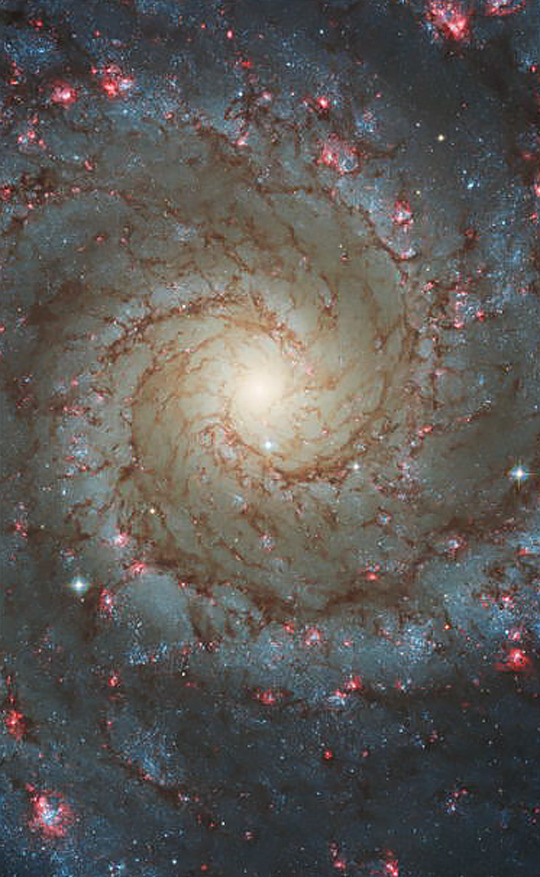

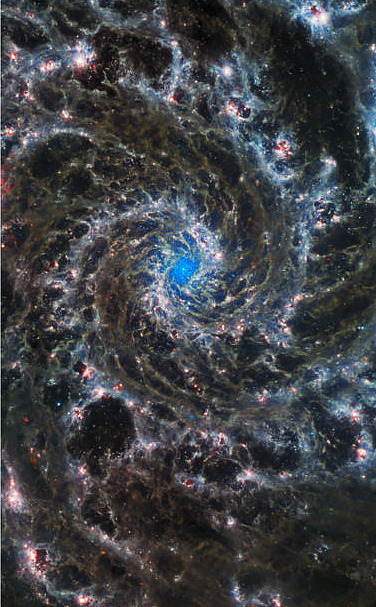

Glowing dust in Phantom Galaxy
© Hubble Optical l Webb(mid-IR, IR)/ H+W
#galaxy#nasa#space#astrophotography#ngc 628#james webb telescope#hubble telescope#planet#stars#cosmos#universe#planets#solar system#jwst#phantom galaxy#webb
2K notes
·
View notes
Text

The Phantom Galaxy, M74 // Rob Calfee
The Phantom Galaxy was discovered by Méchain in 1780 and communicated to Messier who listed the galaxy in his catalog. Its name likely comes from the difficulty of observing it. It's recommended to modern amateur astronomers to use "averted vision" or peripheral vision to see this galaxy through a telescope.
Méchain himself noted the difficulty: "This nebula doesn’t contain any stars; it is fairly large, very obscure, and extremely difficult to observe; one can recognize it with more certainty in fine, frosty conditions"
#astronomy#astrophotography#messier marathon#galaxy#spiral galaxy#star-forming galaxy#phantom galaxy#messier#messier 74#M74#NGC 628#pisces
62 notes
·
View notes
Text

Messier 74 [NGC 628] by JWST/MIRI
39 notes
·
View notes
Photo
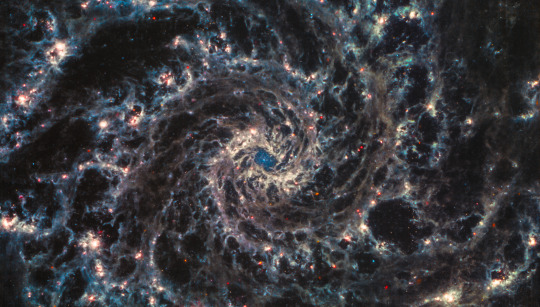
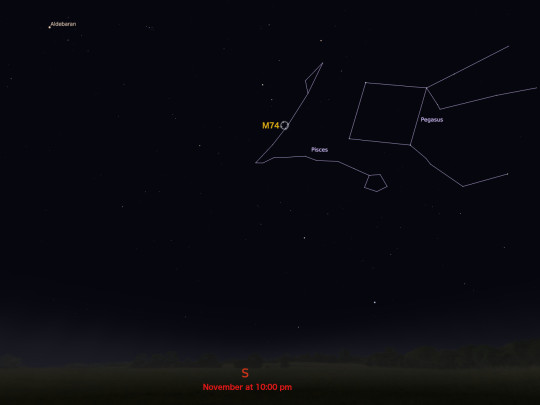
phantom galaxy
6 notes
·
View notes
Video
Thanks to all the specialists at @NASA JWST, we are getting these awesome new photos of our Universe.
2 notes
·
View notes
Text
The Phantom Galaxy Stirs the Pot ~ 2 Sep 2022
The Phantom Galaxy Stirs the Pot ~ 2 Sep 2022, Philip Sedgwick
The 74th entry in the Catalogue of Nebulae and Star Clusters (M-74), also known as the Phantom Galaxy, became less of an apparition recently as images appeared online of its spectacular spirals courtesy of the European Space Agency. This catalog noted above consisted of 110 objects compiled by Charles Messier in 1774 and as later amended, became known as the Messier Catalog.
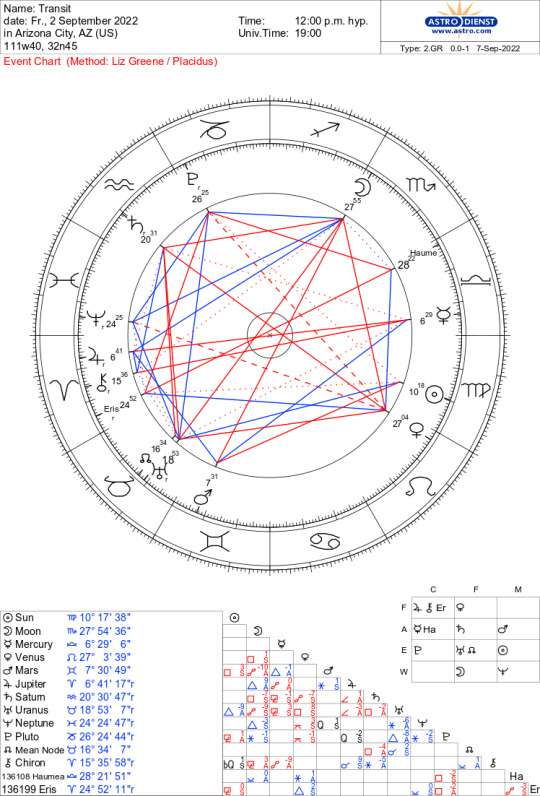
The Phantom Galaxy is a “grand design spiral” galaxy - a galaxy with well-defined arms that spin out from the galactic core. Following are two mandala-like images recently compiled with data from both the Hubble and James Webb Space Telescopes.
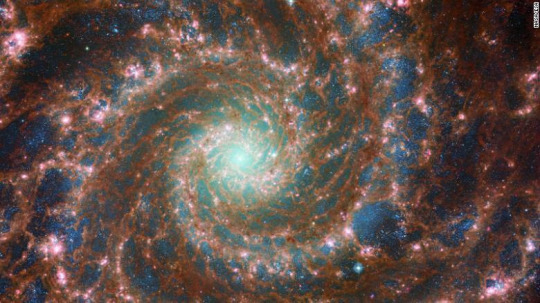
Photo from Webb Telescope

M-74, in mid IFR, photo from Webb Telescope
Why is it called the Phantom Galaxy? Simply, its surface brightness is low and it is better “viewed” in non visible light spectrums. Most likely the core of the galaxy consists of an intermediate mass black hole; intermediate in this case meaning approximately 10K solar masses in size. This unconfirmed black hole goes by the designation CXOU J013651.1+154547.
For astrological purposes, where in the universe is this phantom thing? More or less approximating for precession, the Phantom Galaxy, though “seen” within the constellation Pisces by sidereal orientation, weighs in geocentrically at 28 Aries 28. Most will note that for all intents and purposes it now squares Pluto in Capricorn slightly more than two degrees from exactitude. Curiously, the lord of the underworld was infamous for his helmet of invisibility and its use. Certainly this spectacular galaxy’s image rendering reaches out to cause a collective gasp for all who view it... a powerful, transformation inspiring gasp.
Pluto precisely squares M-74 on 25 January 2023. In August 2023 he retrogrades through another square and in late November 2023, forms the final direct square to the Phantom.
Eris in Aries currently stands about four degrees from precise alignment to the galaxy. Starting in 2038 and running through 2042, she conjoins M-74 several times.
But why did this image suddenly make all the news feeds now and end up in online posts? How useful is all this galactic crap, anyway?
More notable in the present, Haumea stands across the sky from the Phantom Galaxy, seven arc minutes short of an exact opposition. She will next exactly oppose M-74 on 8 September - just days away! In the middle of July 2023, Haumea, after a brief stint in Scorpio, stations within a half degree of being opposite M-74 again.
Back in the day when serialized story content came over radio, the tagline, “The Phantom knows” frequently titillated the ears of listeners. We know that phantoms love to linger in the rafters of opera houses. But those are of fictional imaging. What reality can be derived now from this galactic awareness now?
In Hawaiian lore, Haumea was a prolific creation goddess. She birthed Pele and other deity revered in the islands. She could summon lava as she wished. She held a makalei stick, which, when she put it in the water, attracted fish to feed the people. Haumea possessed fantastical abilities to create whatever was needed.
In space, the dwarf planet Haumea holds two known moons in her orbit and she has several large bodies of ice that follow within her orbit. This symbolizes the guttural assessment of what individuals belong in your inner circle and which are better suited as members of an entourage.
For practical purposes, Haumea encourages unabated creative pursuit of all known inspiration, without the consideration of what others (the competition) may be doing. Further, creative pursuit(s), when in progress can only be reviewed by those in the inner circle known to be honest, no matter what. If fact, better not to seek a critique from those who love you. Better to hire a pro to give comprehensive notes on what you seek to birth in this world.
Or not. With Haumea in opposition to this wonderfully evocative galaxy in Aries, perhaps entering the head down, “do not disturb” self-reliant mode is the way to go. Get in there and do what your spirit years for you to do, even if, especially if, you don’t know where the money is going to come from to put your inspiration in play. If mental funk is in your way, go online and check out the wide array of pics of M-74. Select your favorite. Go to one of those “print your image” places and get a hard copy (images of space are not subject to copyright). Hang the image somewhere where you can use it as a mandala in your meditations or frequently glance at it while you work. That should stir the creativity centers within and start them spinning the right way.
Given Haumea stations near the M-74 opposition July 2023, should you have not seen movement on your soul-driven “gotta do it” objective, go for a review of your plan and your cost analysis to make it real.
Use the Pluto transits to deliver the end game. In January 2023 with Pluto square M-74, it’s a great time to work out the numbers for your grand scheme. Work out an opulent budget as well as an “if we had to trim a corner we could do it for this” budget. Following the Haumea review in July 2023, as Pluto squares M-74 in August 2023 why not put your hand out and ask those in the fiscal position to aide and abet your efforts to do just that? Since Pluto is retrograde, based upon your revised budget, that is. Then as November 2023 rolls around, your pre-production, pre-launch tasks could be in the rear view mirror and you’re now underway.
These are collective transits and contingent upon those consciously seeking to find out what it is the phantom actually knows. It will be crowded out there with new ideas and concepts. Those who have cultivated the greatest visibility through inclusion of all spectrums of awareness go the farthest.
What about when Eris gets to the conjunction with M-74 between 2038 and 2042? Nothing like looking ahead! I predict a major reenvisioning of that thing known as the Internet. Actually this will be based upon a gathering of souls simultaneously realizing that searching for soulful sustenance on this platform may not provide the level of inclusion anticipated. Being an influencer with billions of followers may leave a person empty, feeling void and used. Collectively the goal of Eris to M-74 is for people to realize what is real and what is merely phantasmic and to include themselves into the ultimate of perfect fit realities. And, oh by the way, to fulfill all soulful creative desires.
More soon.
Okay, so if you need a push for getting the creative juices going and lining up energy with action, it’s now time for a consultation. In the sessions I conduct I will include Eris and galactic effects of specific import to free up all levels of creativity. Maybe a block of consultations would make sense to order up. Or perhaps a Galactic Report or asking a question or two would do the trick. Whatever you need, click on the links that follow!
On the film front, both JACK OF ALL LANTERNS and METEORIC have been recently selected to multiple festivals. The festival selections will become more frequent as the fest season matures. There will be more film news soon! Feel free to check out the links to stay current and check screening times. More festival photos will be appearing before you know it.
1 note
·
View note
Text
Альбом «Призрачная галактика» — Новый концептуальный дизайн
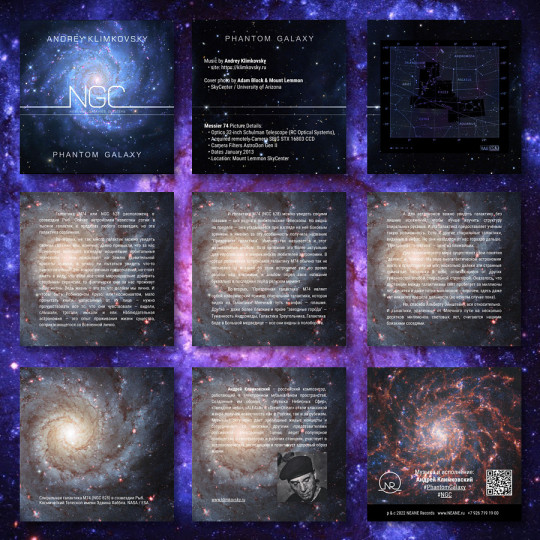
А что еще прилагается к альбому «Призрачная галактика»?
Вот такая книжечка в PDF — удобно листать и в компьютере, и в телефоне. Удобнее всего — под музыку. Это еще и познавательно.
Впрочем, у кого-то это уже есть — им объяснять не нужно, насколько это полезно и красиво.
Страница альбома: https://neane.ru/rus/4/katalog/1303.htm



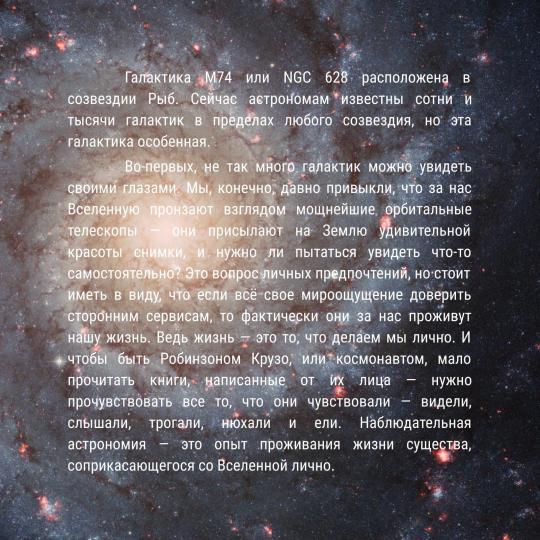




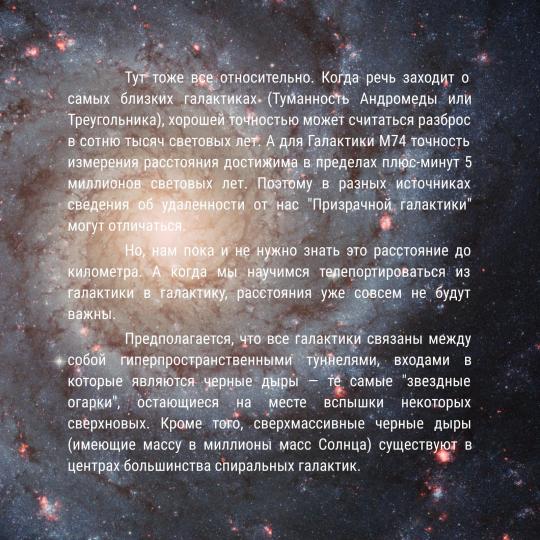

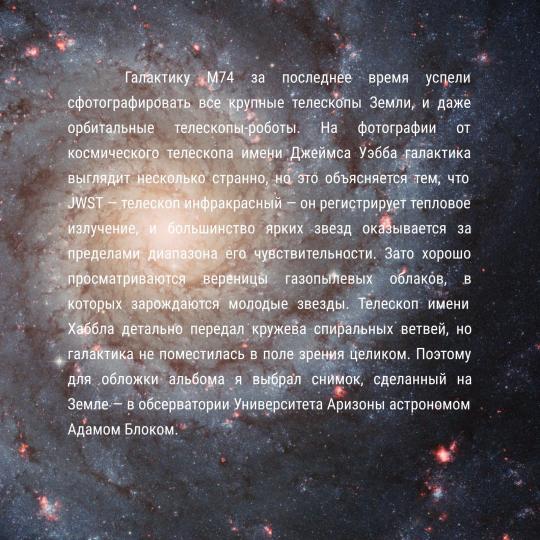



0 notes
Note
omfg i adore ur banner
asdfdglkfhg thamks >w<
it's my favorite James Webb Space Telexcope photo so far- M74, the pantom galaxy and NGC... uh 628??
2 notes
·
View notes
Text
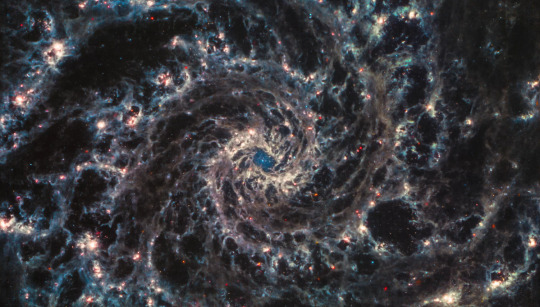
#Phantom Galaxy#The James Webb Space Telescope's imagery of NGC 628 (the ) shows glowing dust in this citizen science image.
2 notes
·
View notes
Text
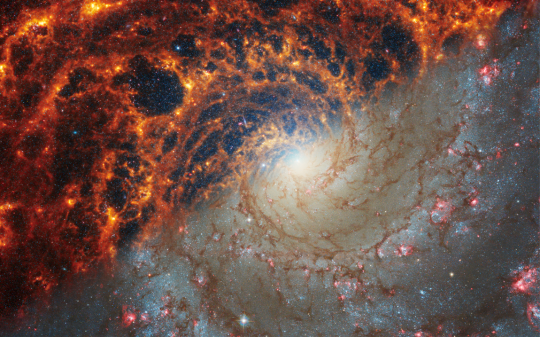
NGC 628 Webb/Hubble by NASA's James Webb Space Telescope
696 notes
·
View notes
Text

The Phantom Galaxy, M74 // David Payne
#astronomy#astrophotography#galaxy#spiral galaxy#star-forming galaxy#phantom galaxy#messier#messier 74#M74#NGC 628#pisces
68 notes
·
View notes
Photo
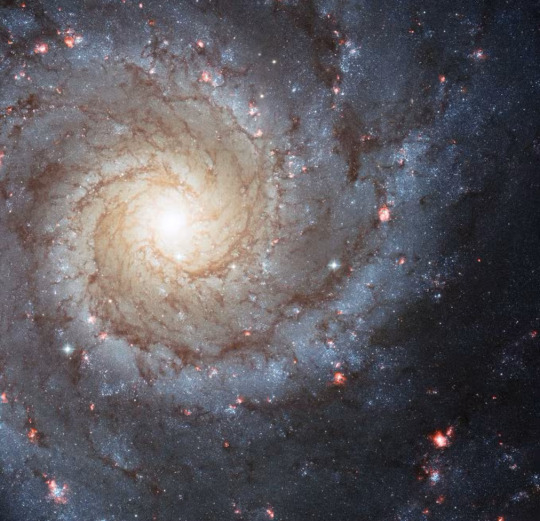
NGC 628, Dusty Galaxy
#Astronomy#NASA#Night#Sky#Stars#Space#Science#Universe#Cosmos#Cosmic#Solar System#Dusty#Galaxy#Nebula#Constellations#Constellation#Rainbow#Bright
827 notes
·
View notes
Text

M74, NGC 628, Phantom Galaxy.
Constellation Pisces
Distance: 30 Mly
#astrophotography#astrophotos#astro observations#urban astrophotography#astronomy#original photographers#cosmos#universe#messier 74#phantom galaxy
114 notes
·
View notes
Photo

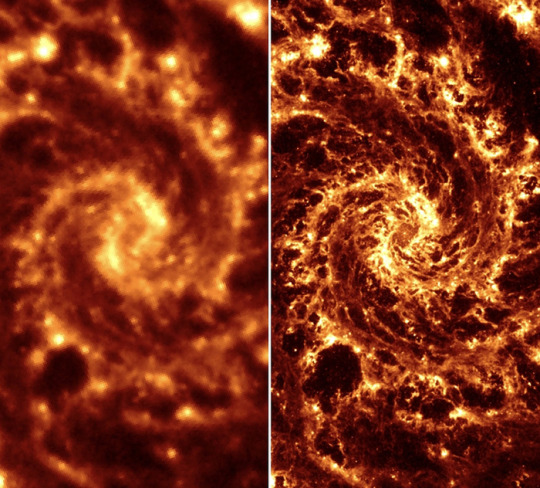
A star is born: Images of nearby galaxies provide clues about star formation It is a popular notion that aside from large celestial objects like planets, stars and asteroids, outer space is empty. In fact, galaxies are filled with something called the interstellar medium (ISM) — that is, the gas and dust that permeate the space in between those large objects. Importantly, under the right conditions, it is from the ISM that new stars are formed. Now researchers from the University of California San Diego, in collaboration with a worldwide project team, have released their findings in a special issue of The Astrophysical Journal Letters dedicated to their work using advanced telescope images through the JWST Cycle 1 Treasury Program. “With JWST, you can make incredible maps of nearby galaxies at very high resolution that provide amazingly detailed images of the interstellar medium,” stated Associate Professor of Physics Karin Sandstrom who is a co-principal investigator on the project. Although JWST can look at very distant galaxies, the ones Sandstrom’s group studied are relatively close at about 30 million light years away, including one known as the Phantom Galaxy. Also known as M74 or NGC 628, astronomers have known of the Phantom Galaxy’s existence since at least the 18th century. Sandstrom, along with postdoctoral scholar Jessica Sutter and former postdoctoral scholar Jeremy Chastenet (now at University of Ghent), focused on a specific component of the ISM called polycyclic aromatic hydrocarbons (PAHs). PAHs are small particles of dust — the size of a molecule — and it’s their small size that makes them so valuable to researchers. When PAHs absorb a photon from a star, they vibrate and produce emission features that can be detected in the mid-infrared electromagnetic spectrum — something that typically doesn’t happen with larger dust grains from the ISM. The vibrational features of PAHs allow researchers to observe many important characteristics including size, ionization and structure. This is something Sandstrom has been interested in since graduate school. “The Spitzer Space Telescope looked at the mid-infrared and that's what I used in my Ph.D. thesis. Since Spitzer was retired, we haven't had much access to the mid-infrared spectrum, but JWST is incredible,” she stated. “Spitzer had a mirror that was 0.8 meters; JWST’s mirror is 6.5 meters. It's a huge telescope and it has amazing instruments. I've been waiting a very long time for this.” Even though PAHs are not by mass a big fraction of the overall ISM, they're important because they’re easily ionized — a process that can produce photoelectrons which heat the rest of the gas in the ISM. A better understanding of PAHs will lead to a better understanding of the physics of the ISM and how it operates. Astrophysicists are hopeful JWST can provide a view into how PAHs are formed, how they change and how they’re destroyed. Because PAHs are evenly distributed throughout the ISM, they allow researchers to see not just the PAHs themselves, but everything around them as well. Previous maps, such as ones taken by Spitzer, contained much less detail — they essentially looked like galactic blobs. With the clarity JWST provides, astrophysicists can now see gas filaments and even “bubbles” blown by newly formed stars, whose intense radiation fields and resulting supernova evaporate the gas clouds around them. To get observation time on JWST, the Cycle 1 Treasury Program team had to design observations that included details such as exposure length and filters. Once their submission was accepted, Space Telescope Science Institute, which is responsible for the science and mission operations for JWST, captures and processes the data. This program includes data from 19 galaxies in total. The Cycle 1 Treasury Program is part of a bigger project called PHANGS (Physics at High Angular Resolution in Nearby GalaxieS). PHANGS studies star formation and the ISM using multi-wavelength images from the Atacama Large Millimeter Array (ALMA) and the Very Large Telescope, both in Chile. However, because the dense clouds in which star formation happens contain a lot of dust, it is difficult for optical light to penetrate to see what's happening inside. Using the mid-infrared spectrum allows researchers to use that same dust and its bright emission to get high-resolution, detailed images. “One of the things I'm most excited about is now that we have this high-resolution tracer of the ISM, we can map all kinds of things, including the structure of the diffuse gas, which has to become denser and molecular for star formation to occur,” said Sandstrom. “We can also map the gas surrounding newly formed stars where there is a lot of ‘feedback’ such as from supernova explosions. We really get to see the whole cycle of the ISM in a lot of detail. That is the core of how a galaxy is going to form stars.” TOP IMAGE....NGC 7496 lies over 24 million light-years away from Earth in the constellation Grus, and is one of 19 galaxies targeted for study by PHANGS. Its spiral arms are filled with cavernous bubbles and shells overlapping one another in this image from JWST's Mid-Infrared Instrument (MIRI). These filaments and hollow cavities are evidence of young stars releasing energy and, in some cases, blowing out the gas and dust of the interstellar medium surrounding them. At the center of NGC 7496 is an active galactic nucleus -- another way to refer to an active supermassive black hole. (cr: NASA, ESA, CSA, Joseph DePasquale/STScI) LOWER IMAGES....A side-by-side comparison of NGC 628 (Phantom Galaxy) images taken from the Spitzer Space Telescope (l) and JWST (r) show a remarkable increase in clarity and detail. CREDIT SST cr: NASA/JPL-CalTech; JWST cr: NASA, ESA, CSA, STScI
46 notes
·
View notes
Text

Image of NGC 628 or "The Phantom Galaxy" taken by the James Webb Telescope
141 notes
·
View notes